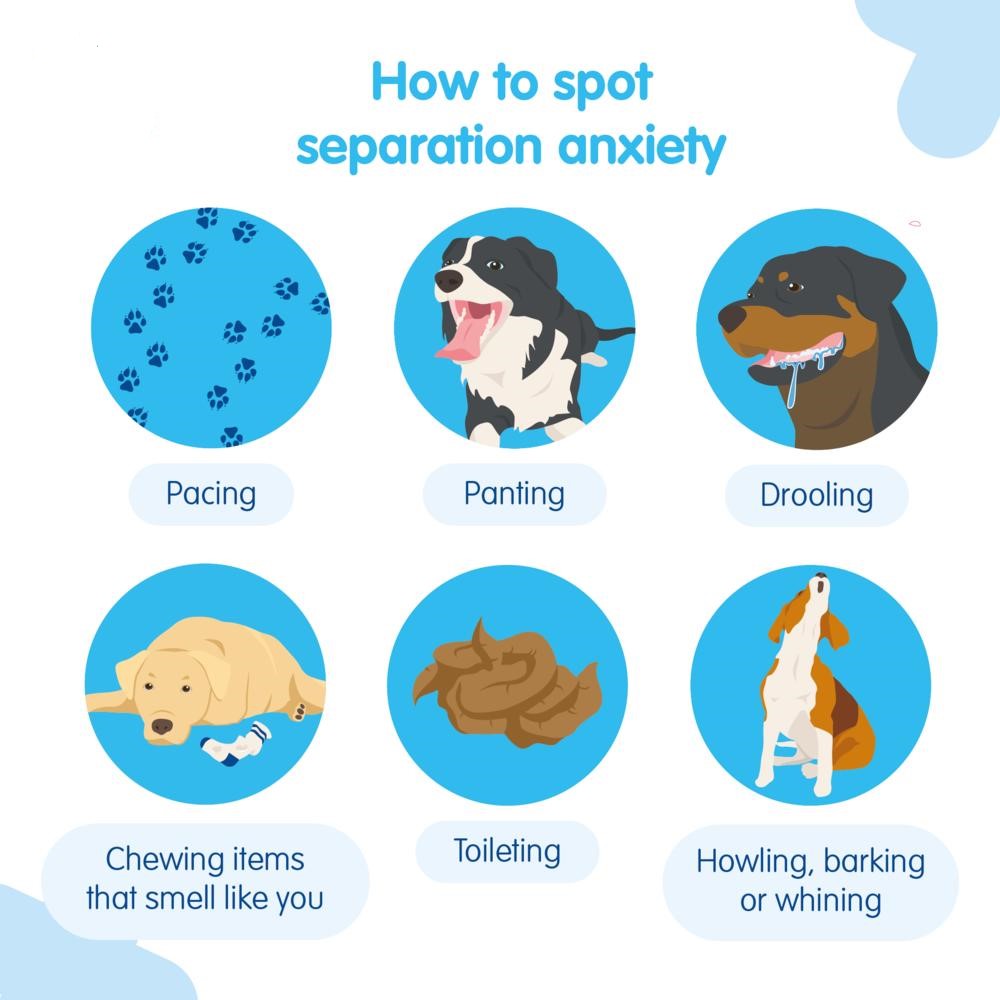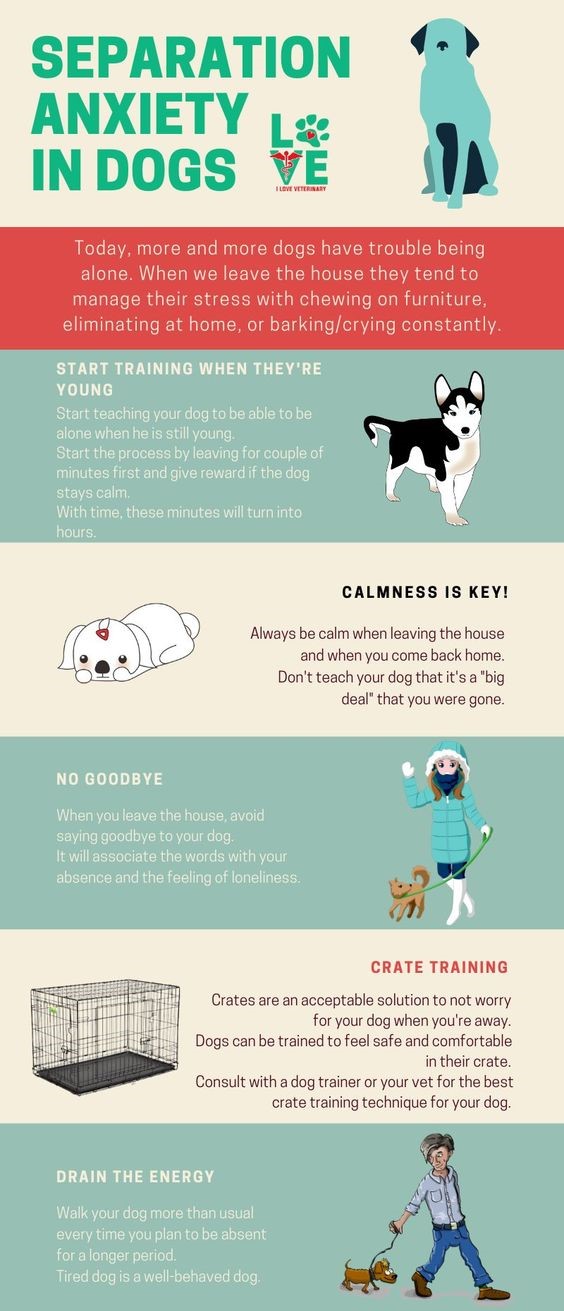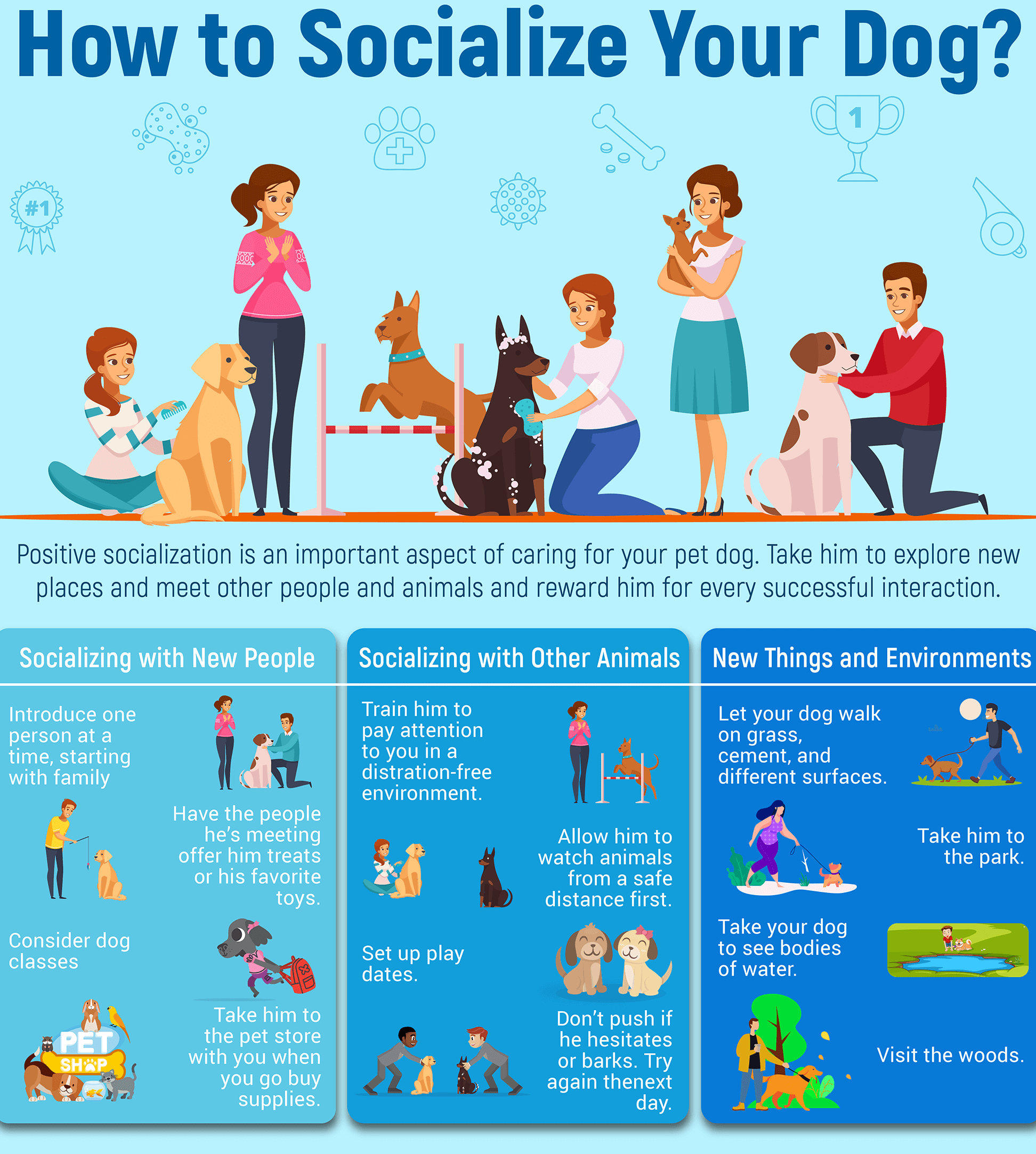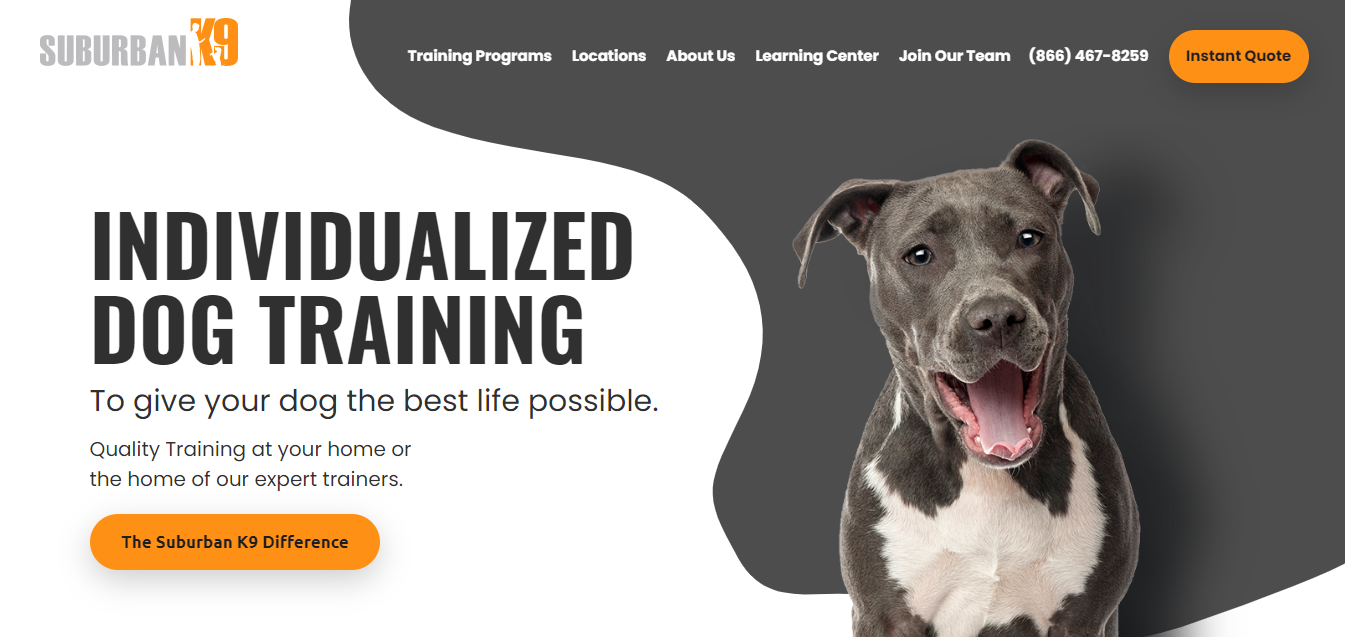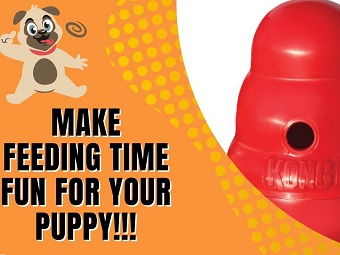Separation anxiety in dogs is real. Remember that time when you came home to chewed-up shoes? Yes, that was because of separation anxiety. The scratched-up front door – yes that too. Let that sink in. Have you noticed how nervous your doggo gets every time you reach the front door knob or how they go bananas on your return?
Separation anxiety makes your dog do a lot of out-of-the-box stuff. Continuous howling, piddled-up couch, slobbering like crazy, unusual behaviors – all done in your absence. Working out the mystery behind your dog's haywire behavior can be tricky especially when all the action takes place in your absence.
To help you reach the bottom of this mystery, we compiled an article that undertakes all the necessary details about separation anxiety in dogs – what is it, how is it caused, and what foolproof ways are to deal with it.
All you have to do is read with full attention, relate to reach out to the underlying problem, and follow the steps that are guaranteed to bring back your furry friend's sanity.
What Is Dog Separation Anxiety?
Separation anxiety is a mental health issue, also known as separation anxiety disorder (SAD). Unfortunately, this separation anxiety is common in dogs too, way too common, we must say. Almost8 out of 10 dogsexperience this condition.
Fortunately, this is a completely treatable condition if dealt right. But what is it? Simply put, it is when your dog gets super clingy with you and cannot bear the separation. This psychological condition affects dogs in a way that causes them to experience extreme distress and anxiety when left alone.
Separation anxiety in dogs is different from the temporary distress they feel when their owners leave. It is often characterized by a heightened level of anxiety that can significantly create havoc on the dog's well-being and quality of life.
Separation anxiety not only affects your dog but it indirectly affects your peace of mind as well. So as dog parents, you should understand and address separation anxiety not only to help our furries find a way out of it but to create a peaceful home life.
Dogs with separation anxiety show different behavioral and emotional symptoms. If you are suspecting your dog of going through separation anxiety, look for these signs and correlate them with the whole situation.
- Drooling
- Following
- Coprophagia
- House soiling
- Pacing & panting
- Attempts to escape
- Destructive behavior
- Overexcited greeting
- Excessive barking, howling, or whimpering
Unveiling The Science Behind Separation Anxiety In Dogs: 5 Common Triggers
Nothing happens in this world without a reason. An issue like separation anxiety has skeletons in the closet. Even though it's not really required but understanding why a dog shows separation anxiety can be helpful when trying to deal with the problem. While there may not be any definitive proof of why many dogs develop separation anxiety, some common findings can take you to these tell-a-tales.
1. Early Life Experience
Dogs that have experienced significant changes or traumatic events early in life, like being abandoned or separated from their mother or littermates too soon, may lack the social confidence to handle themselves on their own.
Trauma can come in any form. It can be abuse from previous owners or early weaning. Not all dogs who have gone through these early life experiences will develop separation anxiety but they sure are at higher risks as compared to other dogs.
2. Lack Of Socialization
Not enough socialization can trigger separation anxiety in a dog. This is why dog training experts emphasize socializing so much. There is a critical socialization window for a puppy that is typically between 8 to 16 weeks of age.
Insufficient social exposure has a lasting effect on a dog's capability to cope with new surroundings or environment. Lack of socialization can take the form of fear of the unknown. As a result, they feel anxious or uncomfortable in new places and always need you around to provide comfort and security.
3. Changes In Routine Or Environment
Generally speaking, dogs thrive on routine and predictability. Sometimes, a change in routine or the surroundings can cause a lot of distress to the dog. They become accustomed to their feeding times, time of interaction with their owner, and even their place of confinement (that's their den basically).
For some dogs, even a change in their owner's work routine will create problems. Change of home or primary caregivers can also make a difference and ruin the predictability factor for them, hence causing separation anxiety.
4. Attachment Issues
Ever heard of the term, "a dog is a man's best friend"? So what happens when a dog doesn't see its beloved owner for a long time? Naturally, it becomes distressed and panicky. Hence causing separation anxiety.
This could happen for so many reasons like the loss of a family member, a change of family structure, temporarily moving to a shelter or with another family, or worse, abandonment. The extent of a dog's anxiety depends on the level of attachment to the owner.
5. Genetics
Recent anxiety research has shown that sometimes genes cause severe separation anxiety in dogs. The genetic markers affect the regulation of neurotransmitters and hormones involved in stress and anxiety responses. If a dog has a parent or close relative with a history of separation anxiety, it means there's a chance the dog could inherit the same issue.
Some dog breeds are more prone to separation anxiety than others. Out of these, labrador retrievers top the list. Some say the reason is their highly social nature and when these guys are left alone for longer periods, their struggle begins.
Others that make it to the list are:
- Vizsla
- Toy poodle
- Bichon frise
- Border collie
- German shepherd
- Jack Russell terrier
- Australian shepherd
- German shorthaired pointer
- Cavalier King Charles spaniel
Products that help with Separation Anxiety
There are a ton of products online that claim to help with separation anxiety. I would suggest that none of them are an end all be all cure, however we have found that there are a good number of them that do help. Keep reading for strategies that will actually work to end the separation once and for all, but here are some of our top picks that can help you out!
- Relieves Stress & Anxiety - Our Dog Calming Treats will keep your furry friend calm and composed during stressful situations
- Natural Calming Aid - Our natural Calming Treats for dogs will provide quick and lasting relief from sore, painful and aching joints
- No Side Effects - Our Dog Calming chews only delivers a gentle sedative effect and does not contain any artificial chemicals that can cause unwanted side effects
- Amazing Taste - Is your furry pal a picky eater? these duck-flavored Chewy Calming Treats will tickle your dog's taste buds every time
- Ideal for All Dog Breeds & Sizes - Whether you are proud parent of a tiny chihuahua or a large german shepherd, Our Calming Treats will keep your pet relaxed
- Safe & Effective: Keep your pet calm and happy with the Pawstopia hemp oil for dogs and cats! This natural formula helps your pet to remain calm during stressful situations.
- Pure Formula: Our cat and dog hemp oil is made with top-quality and all-natural ingredients. It has a special formula that is 100% safe, free of fillers, preservatives, or artificial coloring
- Made in the USA: The Pawstopia all-natural pet hemp oil for dogs promotes joint mobility, shiny coat and relaxation for dogs and cats who fear loud noises or separation from owners. Calming drops for dogs
- Packed With Nutrients: This hemp oil for cats contains high amounts of vitamins, minerals, and amino acids including omega 3, 6, and 9 which can support the health of your pet’s coat, skin and joints.
- Easy Digestion: Our best cat sleep aid has a liquid formula that is quickly absorbed by the body. The pack includes 2 hemp oil bottles with dropper, which makes them easier to give to your pet
- ADAPTIL is the #1 vet recommended and selling solution to help calm and relax your dog at home
- Effective and drug-free solution to may help reduce common signs of stress
- ADAPTIL helps your dog feel calm and comfortable by mimicking a mother dogs natural nursing pheromones
- ADAPTIL heated diffuser covers up to 700 square feet
- Starter kit includes 1 diffuser head and 1 vial; to maximize effectiveness, replace the vial once a month, and the diffuser every 6 months
9 Proven Strategies For Easing Separation Anxiety In Dogs
If your dog displays anxious behaviors, it's time to get into action. These practices, preventions, and little changes in your routine can make a positive difference. Guaranteed.
Read, inculcate what you are missing, and reinforce what you are already doing.
1. Crating
Crating is not only an effective strategy but an essential one. It is a universal fact of puppy keeping to start crate training as soon as your new puppy gets home. A confined space of its own can help a dog in multiple ways. It lets you and your dog maintain a healthy independent relationship along with other things.
The number one rule of crating: get an appropriately sized crate. Just where a dog can stand, sit and turn around comfortably. That's it. Some crates have this really handy divider. It's perfect for when you have a cute little puppy. You can use the divider to make a smaller space inside the crate, just enough for them to feel cozy and secure. As they grow up, you can simply take out the divider and they'll have the whole crate to themselves
Secondly, make it feel like home. Create coziness. Throw in a blanket, a mattress (orthopedic sounds perfect), and a chewy toy (the most essential). Get hold of a Kong toy and stuff it with some yummy, healthy treats like peanut butter. Pop it in the freezer for a few hours and then place it in your pup's crate. They will go nuts for it and happily hang out in their cozy den.
A cover-up blanket over the crate to give your doggo a dark private space is not a shabby idea either. But if you notice destructive behavior like aggressive chewing, refrain from using soft chewable materials. This will be a safety hazard for your dog in your absence.
Get them affiliated with their crate as their comfort zone. Be around them when you crate them initially and then gradually start leaving them alone. Never, we repeat NEVER, use it as a punishment. Negative association with a place that is supposed to be their haven is just crazy.
In the start, they may resist or cry, just soothe them with soft words and be around. Just make sure it's not the potty call. Day by day, they will get accustomed to their "me time" and you will see them going in without you having to tell them.
2. Create A Routine
Creating a routine and following it religiously means you have got one well-behaved doggo at hand. A routine is the easiest way to teach a dog what to expect. Since dogs thrive on a predictable routine, it gives them a sense of security and sensibility and makes them comfortable with their surroundings, hence easing separation anxiety.
Keep everything clocked – from meal time to sleep time and everything in between. This should include their playtime, naps, time in the crate, and time alone as well. Of course, how could we forget the potty breaks?
Their routine clock will eventually start resonating with yours. They'll come to realize when you'll be around to shower them with love and attention and when it's time for them to have a little solo adventure.
This will build a sense of security and trust and make them feel more at ease and less anxious when you're not around. They'll know that you'll always come back after that brief period apart and that reassurance will work wonders in calming their nerves.
3. Graduate Your Departure
If your dog starts showing distress by the littlest of signs of you leaving the house, change the way you leave. Of course, this is a short-term change. When your dog gets accustomed to you leaving, things can go back to normal.
When you close the door behind you, lock it and stay put. Test your dog's behavior. Then go inside, say within 5 minutes. Use some calming words along with a praise word like "good doggie". Repeat the process while increasing time and make it a daily ritual.
Eventually, your dog will start getting used to the idea that it's okay to stay behind. When you come in and go back often, the dog understands that your leaving is not permanent and that you will return after some time.
Also, don't make loud exits. When you make a fuss during your exits, it can signal to your dog that your leaving is a big deal, potentially triggering anxiety. Try to keep it as subtle as possible. For now, control the urge of saying those loud goodbyes.
4. Minimize Disturbances
Loud, unpleasant noises trigger anxiety in some dogs. It can be anything from fireworks, and loud door bangs to thunder, or a lawn mower. Sometimes even a person passing by the window can trigger anxiety. As a dog owner, you have to know what the triggering element is for your dog.
There are many ways to minimize disturbance. You just have to know what works for your dog. Keep the curtains rolled down to minimize your dog's visibility to strangers passing by. If it's noise that is bothering your dog, keep the windows down too. You can also turn on some calming music or TV for muffling unwanted sounds. Or you can simply leave them in a distraction-free room.
When you are mindful of these triggers and make these simple adjustments, you provide a much more relaxed atmosphere for your dog. Over time, they'll link these changes with feelings of comfort and safety which will help ease their separation anxiety and make their time alone a more pleasant experience.
5. Exercising
When it comes to easing your dog's separation anxiety, getting them moving and grooving can work wonders. Exercise is the most underrated calming drug. Exercise releases hormones that are commonly known as happy hormones.
Scientifically, we call them endorphins. Oxytocin and dopamine are the kinds of hormone release that you would want for your doggo to feel less panicky and more at peace. Hence, a general feeling of well-being.
Even though it varies for every breed and dog but the general rule of thumb is to inculcate a good 2-hour outdoor exercise in the daily routine. It can be in the form of fun games like fetch or catching up or whatever you and your doggo enjoy together. Having said that, mental exercise is equally important for your dog's wellness.
Get a treat dispensing puzzle for your dog. If it grabs your dog's affection, your dog will spend hours with it. If not, spend time together, trying to solve it with encouraging cue words, eventually making your dog interested in it. Then gradually leave it for individual play.
Other than treat-dispensing ones, there are many mind-stimulating dog toys abundant in the market. Mental stimulation before you leave can make your dog ready for rest time. Also, food interactive toys or chewy ones like Kong with frozen peanut butter filling (umm delicious) can be a great option.
6. Socialize More
Is your dog socializing enough? When you talk it out for walks, do you make it a point that it mingles with its kind or even the neighborhood kids? Social exposure is extremely important for a dog's mental well-being. They learn how to react to new people, other dogs, and different situations. This can also mend a dog's behavioral problems.
Take your dog out for socializing when it's time for its outdoor activity. Look for dog-friendly parks, walking trails, or open spaces where dogs are allowed. You want an environment where your dog can interact with other dogs and people but without overwhelming them. Start with quieter places before venturing into more crowded spots.
Once you're at the location, keep an eye on your dog's body language. Watch for signs of nervousness or discomfort. If they seem anxious, take a step back and give them some space. Gradual exposure is key to a successful socialization process.
If that is not a possibility, hire a dog sitter or send your dog to a daycare for a few hours. This comes in handy, especially when you have to go for long hours. Your dog, who is already going through separation anxiety, will not be left alone for too long.
7. Reinforce Obedience Training
Speaking of mental jobs, hopefully, your dog had its fair share of obedience training when it was a pup. But when you see things getting out of control, there is no harm in a little reinforcement. Going on an obedience drill now and then with your anxiety-stricken doggo is an excellent way to establish a strong bond while providing them with mental stimulation.
When you give your dog a mental task, you help them expend energy and reduce anxiety when alone or in a crate. It's a proactive approach that sets your puppy up for success.
8. Seek Professional Help
Puppy separation anxiety can come from various underlying issues. Seeking professional help where your loved ones' health is considered is the sanest thing to do. Take your dog for regular vet visits. Understand that it is a part of owning a dog.
Perhaps what your dog needs is medication or maybe just a good dog behaviorist. It could be anything. A vet can rule out any probable medical issues that might be causing your dog to act like that. Let the professionals make better decisions.
Chances are your vet can recommend seeing a professional dog traineror a certified applied animal behaviorist after seeing the extent of the issue your dog is facing. Professional trainers have a special way with dogs to treat separation anxiety. It comes with years of experience to handle such cases and the dog owners can't simply have it.
9. Importance Of Patience & Consistency
Separation anxiety is a medical condition – not your dog being unjustly clingy or whiny. So be patient. A calm mind can let you think rationally, understand the situation in a better way, and deal with it accordingly. So you need to practice patience if you want your dog to come out of this misery.
We also understand that caring for a dog with separation anxiety can be challenging and emotionally draining. Practice patience with yourself as well. Take breaks, practice self-care, and seek support from friends, family, or support groups to help manage any frustrations or stress you experience.
Dogs with separation anxiety benefit from a consistent routine. Stick to a regular schedule for feeding, exercise, and alone time, as predictability can help reduce anxiety. Patience is the key element required to maintain this routine to reach the goal.
Remember, every dog is unique and the journey to overcome separation anxiety can take time. Patience, consistency, and a compassionate approach are important in helping your dog gradually improve and become more comfortable with being alone.
Suburban K9: A Better Way To Handle Separation Anxiety In Dogs
At Suburban K9, we provide personalized in-home training sessions where our team of experienced trainers guides your puppy to overcome anxieties that may be causing them fear.
Our proactive approach to treating separation anxiety through private in-home lessons and socializing sessions makes your dog understand the importance of house rules. It's all about creating a safe and comfortable environment for your pup.
During the training, we give them mental challenges that tire them out, and that means they have less energy left to feel anxious when they're alone or in a crate. We teach your dog to get used to short periods of alone time, building up their confidence step by step. We'll also teach them that being alone can be enjoyable too.
You know what sets us apart at Suburban K9? Our training method that we call the balanced training approach. Instead of just using positive reinforcement, our comprehensive approach guarantees your dog learns proper obedience and great behavior.
Here's the scoop: we establish rules but we're all about being gentle and understanding with your furry buddy. No harsh or cruel methods here – just a supportive way to nudge your dog in the right direction.
Conclusion
Separation anxiety in dogs is not an invincible challenge. Period. It is totally treatable but with the right strategies and expert approach at hand. Top this all up with a consistent routine carried out with utmost patience and voila! You got everything under control. Yes, it is as simple as that.
But before everything else, it is very important to understand the underlying reasons. The best people to help you with that are veterinarians and expert dog trainers in your area. These experts have the know-how to dig into what might be going on with your pup and they can give you the right guidance to make things better.
At Suburban K9, we have a team of expert dog trainers who understands that every dog is unique and base their proactive approach on this fact. We know the best way to deal with such issues is to work on the bond between the dog and its owner and this can be achieved via obedience training coupled with proper socialization. So look out for our highly customized in-home training lessons for a more harmonious life together. Contact us now to book a free consultation.
The article above contains Affiliate Links from Amazon and other companies. If you visit their site and buy the product, we will get a small commission. Please know that we only recommend products we truly love and would never recommend a product we don't think is incredible. We look at and try hundreds of products before we ever recommend them to our clients!
